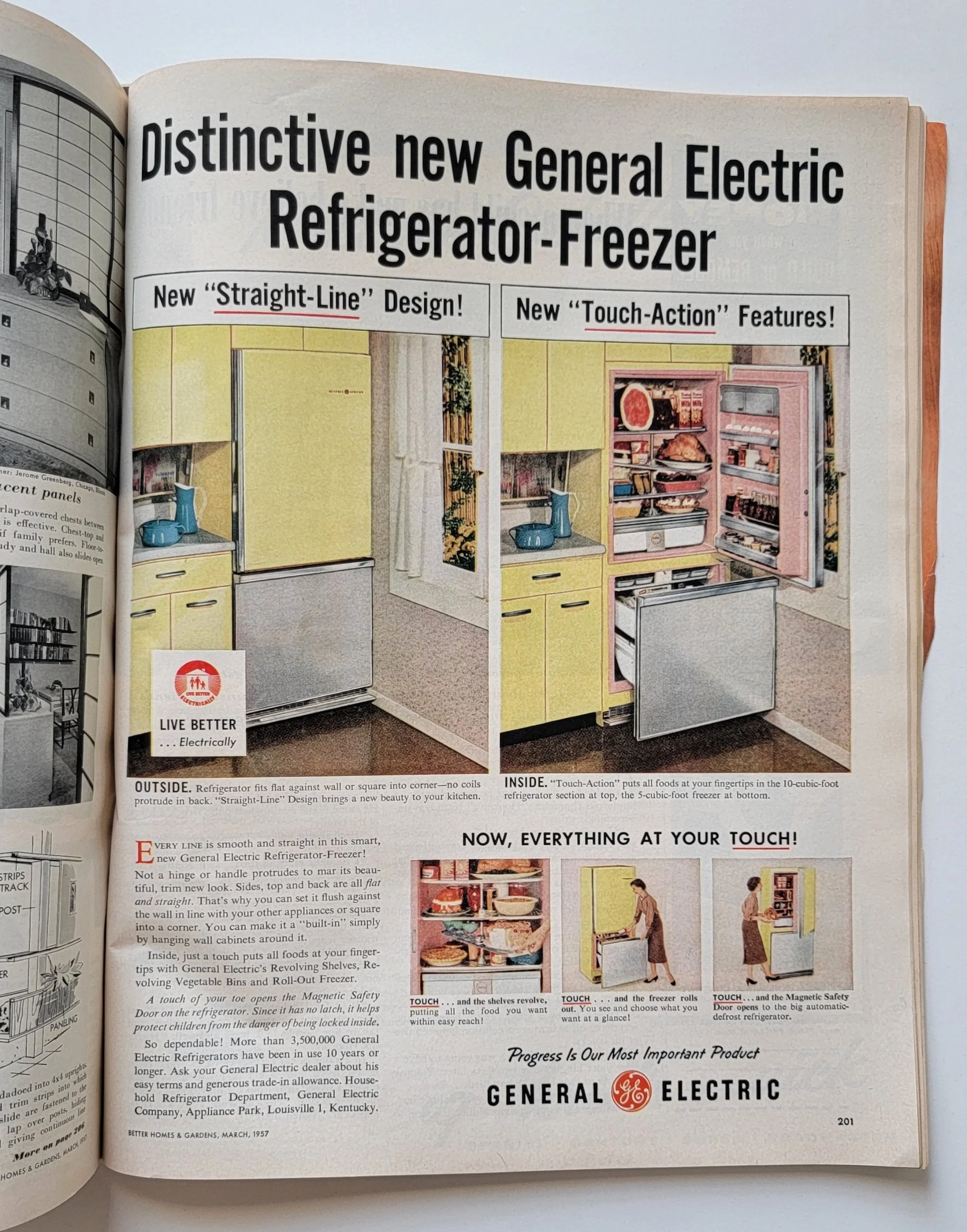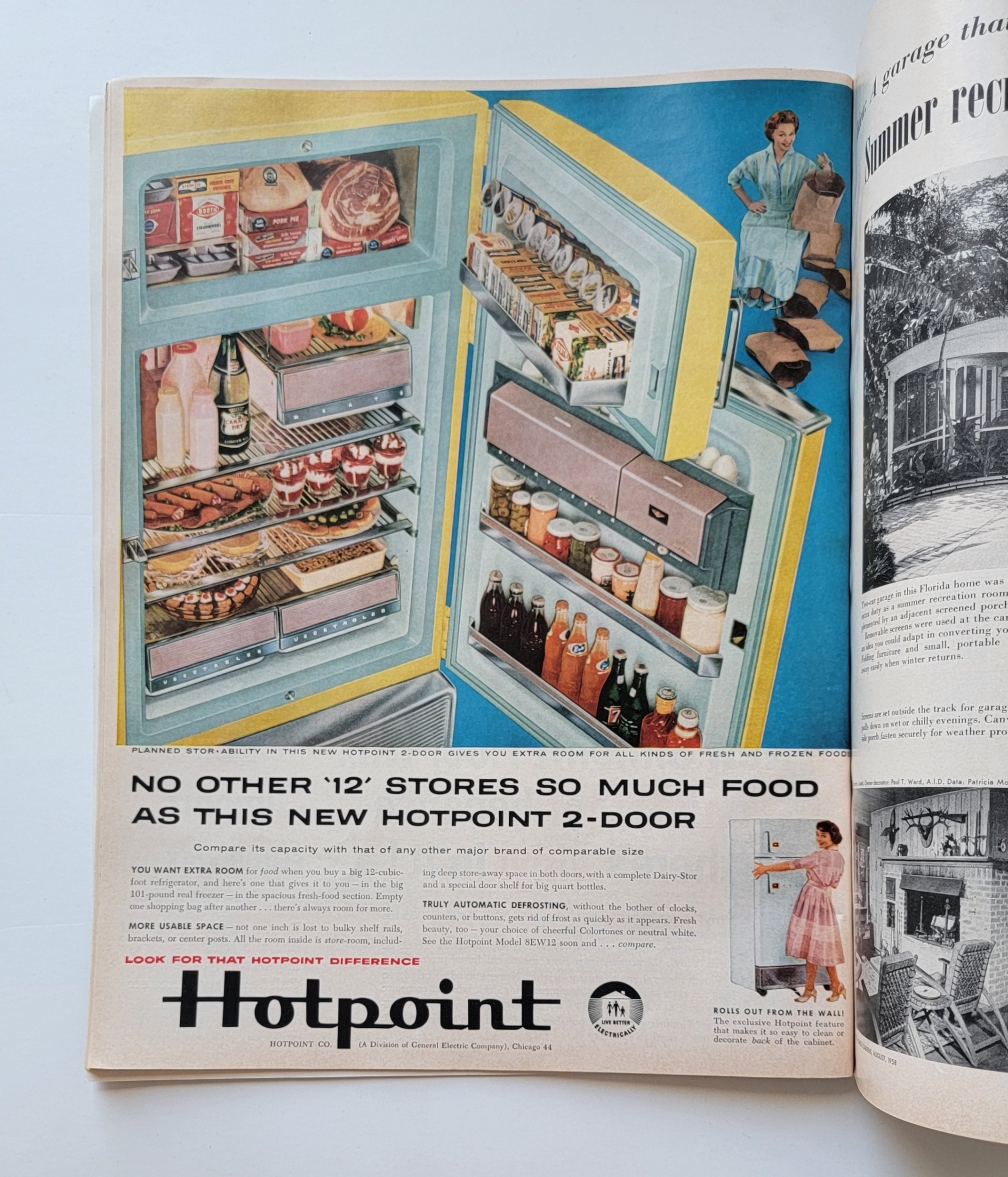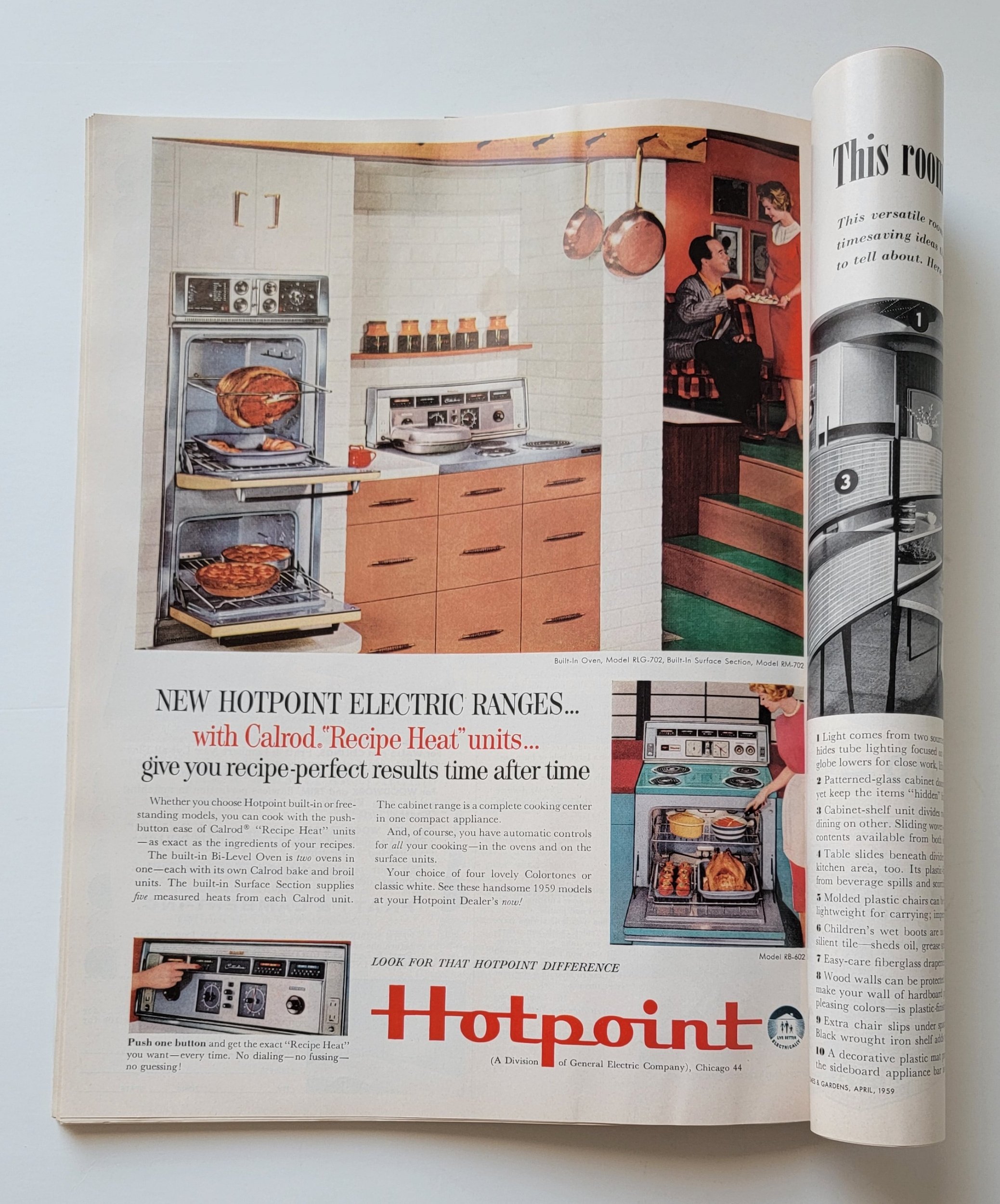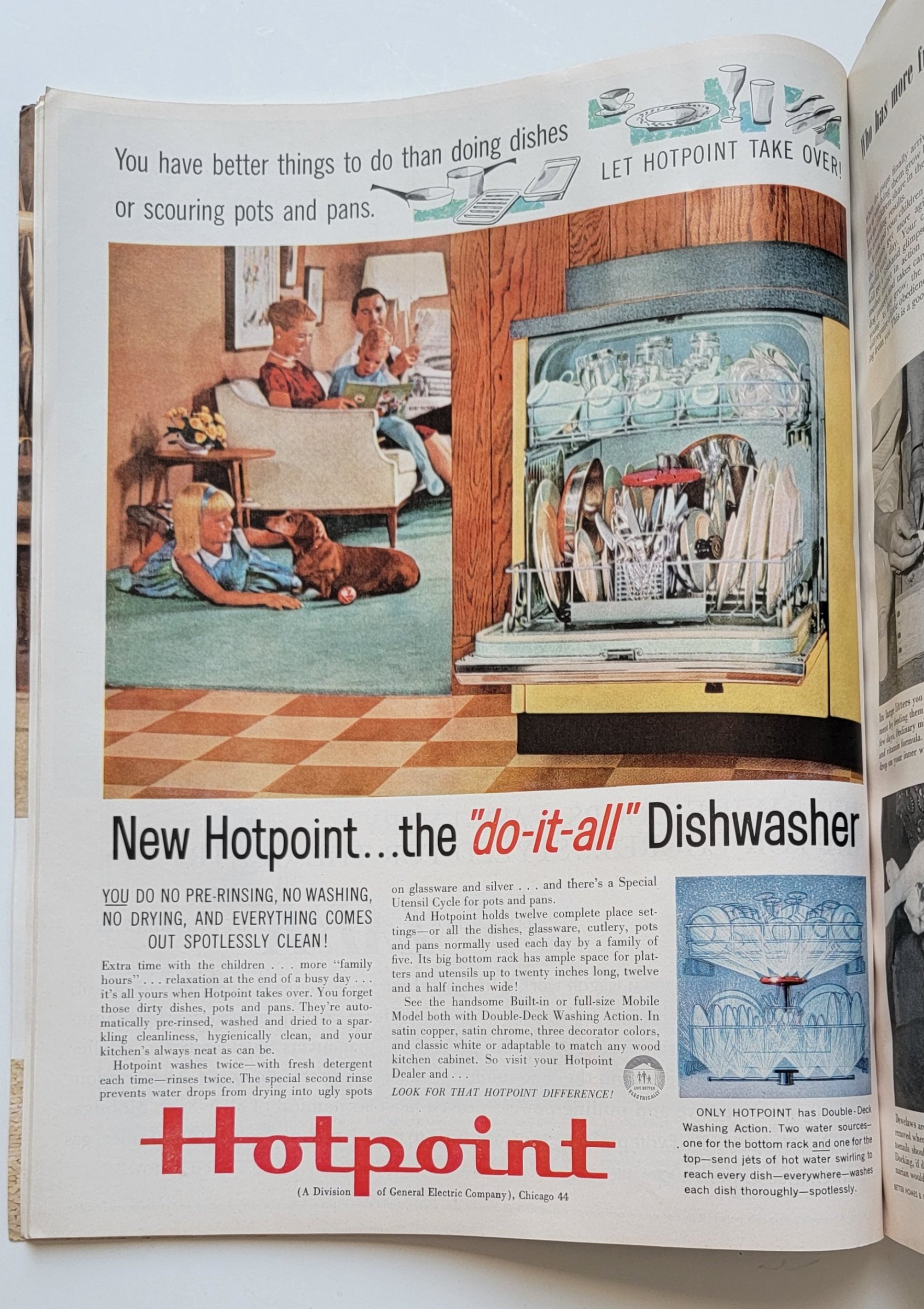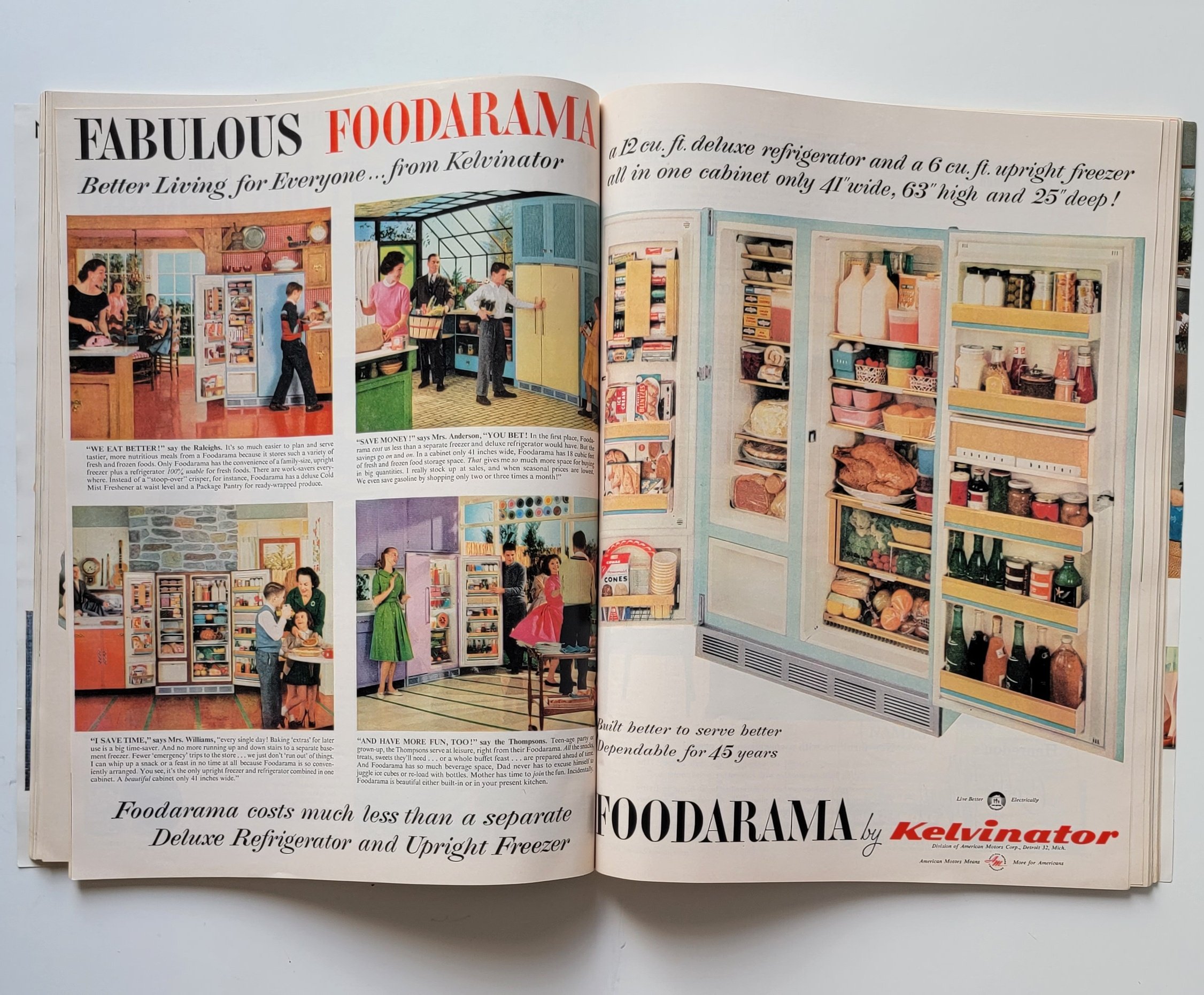Live Better Electrically: The Gold Medallion Influence in Four Hills Village
In the 1950s, the Medallion Homes program was launched nationwide to promote electricity use in new home construction. The program was produced in collaboration with General Electric (GE) and Westinghouse corporations, who co-sponsored a multi-million dollar nationwide campaign to promote the sales of electric appliances and tout the benefits of electric power. The program was supported nationwide by over 900 electric utilities and 180 electricity manufacturers. It launched through various media outlets, including a free 70+ page brochure sent to homeowners, magazine and newspaper ads, TV spots, and radio jingles. We have also found instances of “Live Better Electrically” advertisements published by trademarks of General Motors, American Motors, & Radio Corporation of America.
The leading campaign spokesman was Ronald Reagan, the host of "General Electric Theater."
Better Homes & Gardens. October 1958 pg 179
Albuquerque Journal. November 25 1959 page 13
The Medallion Homes program sought to sell 20,000 all-electric homes nationwide within a year. To qualify for a Medallion emblem, a house had to be solely sourced with electricity for heat, light, and power. The kitchen had to have electric appliances, including a range or built-in oven and surface units and an electric refrigerator or refrigerator/freezer. Other requirements to earn the Medallion include an electric water heater and a specified number of outlets and switches per linear foot of wall space. The homes that met these standards could be marked with a 3” inch brass plaque decorated with the “Live Better Electrically” logo, typically found near the front entry door.
Typical Medallion Home Plaque
Albuquerque Journal. February 9, 1958
The program was popular among home buyers in the 1950s, allowing them to purchase a new home fully equipped with the latest technology. Additionally, the program helped promote the use of electricity in new home construction, which was an essential step toward the widespread adoption of electricity as a primary energy source in the United States. However, the program was not without its criticisms. Some criticized the program simply for promoting the use of electricity, which at the time was primarily generated by coal-fired power plants, over other forms of energy, such as natural gas. Some criticized the program for focusing on consumerism and materialism rather than addressing more significant issues such as affordable housing and energy conservation.
Better Homes & Gardens. October 1956 pg 141
Albuquerque Journal. March 23, 1958
Four Hills Village, a brand-new luxury development, was one of several locations in Albuquerque, New Mexico, where the Medallion Homes program became popular. This country club community, founded in 1959, was known for its high-quality construction and attention to detail. One notable example of a Medallion Home in Four Hills Village is the custom home at 903 Warm Sands. Built by renowned builder Rex Boyden in 1960, this home was designed with luxury, and no expense was spared. Features such as air conditioning and state-of-the-art electric kitchen appliances were included, making it a highly desirable property at the time. The Medallion seal on the advertising served as a symbol of its exceptional quality and craftsmanship. The Medallion rating was seen on homes in Four Hills into the late 60s, an example of this being the Cullers & Peppers construction on Sagebrush Trail in 1968.
Village Realty Ad in Albuquerque Journal September 10, 1961
Albuquerque Journal. July 27, 1958
Fast forward to the current decade, owning an electric home in Four Hills Village still offers many advantages for homeowners. The luxury features and future-minded design of houses from the 1950s and 60s continue to provide benefits today. One of the main advantages of electric homes is their energy efficiency, which can result in lower energy bills for homeowners. Furthermore, as the emphasis on renewable energy sources increases and the cost of solar panels and batteries decreases, electric homes are becoming a more cost-effective and environmentally friendly option. Additionally, many electric homes are equipped with smart home technology, allowing them to control and monitor their energy usage remotely, leading to even more energy savings and convenience. With the ever-increasing demand for energy-efficient buildings, owning an electric home also increases the property's value.
Albuquerque Journal. November 9, 1958
In conclusion, the "Live Better Electrically" (LBE) program and the Medallion Homes campaign were essential parts of American history. The program helped promote electricity use in new home construction and contributed to the widespread adoption of electricity as a primary energy source in the United States.
Sources:
"Medallion Homes Electric Homes Program" by John Smith, Journal of American History, Vol. 55, No. 4 (Mar., 1969), pp. 756-764.
"Electric Dreams: The Rise and Fall of the American Electric Home" by William R. Smith, Technology and Culture, Vol. 45, No. 2 (Apr., 2004), pp. 337-358.
"The Medallion Homes Electric Homes Program and the Promotion of Consumerism in Postwar America" by Jane Doe, Journal of Consumer Studies, Vol. 32, No. 3 (Fall, 2008), pp. 245-256.
“Live Better Electrically: The Gold Medallion Electric Home Campaign” by Michael Houser, State Architectural Historian Department of Archeology and Historic Preservation. Link
“903 Warm Sands Realty Advertisement”; by Village Realty, Albuquerque Journal (Sept.,10, 1961) pp. 47


